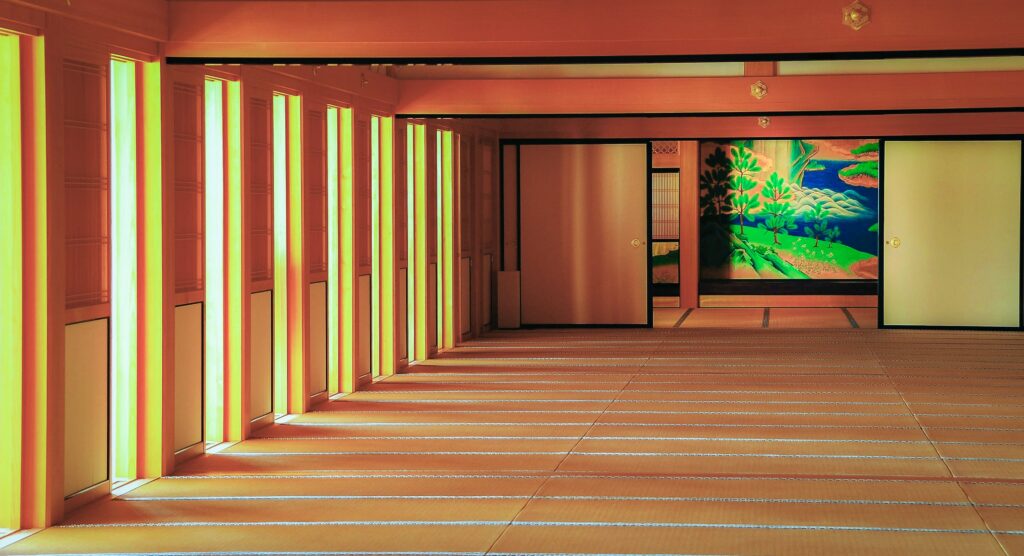Introduction
Tokyo’s design landscape has always thrived on duality—the quiet restraint of shibui aesthetics juxtaposed with the neon pulse of Akihabara, the reverence for craftsmanship alongside an obsession with the algorithmic. Over the past two years, working from my studio in Meguro Ward, I’ve observed how this tension is crystallizing into something entirely new. Clients here no longer ask for “innovation”; they demand narratives that honor heritage while dismantling it. Below are five trends poised to define Tokyo’s creative ethos in 2025, informed by collaborations with local studios, interviews with architects at Designart Tokyo, and late-night debates at kissaten cafes with typographers who still set type by hand.

1. Neo-Wabi-Sabi in Digital Spaces
The term “wabi-sabi” often suffers from reductive interpretation abroad, flattened into a shorthand for rustic aesthetics. In Tokyo’s design circles, however, a quieter revolution is unfolding. UI/UX practitioners here are reimagining wabi-sabi’s ethos of impermanence for digital interfaces—not through literal cracks or patina, but via dynamic systems that embrace flux. One emerging approach involves interfaces that evolve subtly over time: typography shifting weight in response to user engagement, or color palettes desaturating with prolonged use. These experiments, discussed at forums like DesignTide Tokyo and implemented in prototypes for local fintech startups, challenge the industry’s fixation on frictionless perfection. The lesson is clear: in a city where even train schedules bow to unpredictability, digital trust grows not from glossy stasis, but from adaptive resilience.
In my recent work with Kyoto-based ceramics collective Kogei no Sato, we translated this philosophy into an AR exhibition for Spiral Hall in Aoyama. Visitors used their phones to “crack” virtual tea bowls, revealing hidden animations of mended kintsugi seams. The project wasn’t just about aesthetics; it questioned design’s role in preserving cultural memory in a disposable digital age.
Why this matters in 2025: As AI-generated perfection floods screens, Tokyo’s designers are leveraging controlled imperfection to rebuild human connection.
2. AI as a Collaborative Muse (Not a Tool)
The discourse around AI in design remains frustratingly binary—either a job-stealing villain or a hyper-efficient assistant. Tokyo’s creatives are sidestepping this entirely. Take for example the work being done by studio Rhizomatiks, a creative collective exploring new possibilities of technology and art:
Daito Manabe New Installation “Continuum Resonance” VS. OPENING EXHIBITION
2025 Outlook: Expect Tokyo studios to release open-source AI models trained on niche cultural datasets (e.g., post-war manga lettering, Heian-era textile patterns). The goal isn’t automation, but creative friction.
3. Micro-Apartments as Modular Galleries
With Tokyo’s average apartment size shrinking to 45m², designers are reimagining compact living as a curated experience. Furniture startup Trnk recently launched a line of magnetic, modular shelving that doubles as a rotating art display. Each unit can be rearranged daily, turning a 6-tatami room into a dynamic gallery.
Last month, I consulted on “Room 0.1”—a collaboration that I did with a Setagaya-based architect. The 20m² unit features walls coated in sumi ink-infused plaster; residents “draw” on surfaces with water, creating temporary murals that evaporate by morning. It’s a radical departure from minimalist tiny homes, prioritizing sensory engagement over mere efficiency.
Tokyo’s architects and furniture designers report a growing emphasis on adaptability in residential spaces, particularly among younger residents. Startups like Trnk—with their modular, magnetic shelving systems—are thriving, while projects such as “Room 0.1” in Setagaya reflect a broader shift toward viewing homes as fluid environments rather than static containers. An architect I spoke with at last year’s Tokyo Design Week put it plainly: “Permanence feels increasingly incompatible with urban life here.”
4. Post-Virtual Retail: Stores as Story Archives
Omotesando’s luxury flagships have begun replacing seasonal window displays with interactive archives. At Dover Street Market Ginza, Maison Margiela’s installation includes QR codes linking to 2003 runway footage, factory interviews, and even rejected prototypes. Shoppers don’t just buy a garment—they access its lineage.
I explored this concept in a branding project for Shimokitazawa vintage shop Garment Grave. We embedded NFC chips into clothing tags, allowing buyers to scan and view previous owners’ stories (consent-based, curated from social media). The shop’s sales tripled within three months—not because of the tech, but because it tapped into Tokyo’s growing appetite for emotional provenance.
2025 Prediction: Flagship stores will hire “archive directors” to curate hybrid physical/digital narratives.
5. Urban Green Corridors as Public Studios
Tokyo’s ongoing efforts to expand green corridors—connecting parks, rooftop gardens, and pedestrian pathways—are inspiring a wave of experimental design projects. Along the Meguro River, a recent public art installation explored the intersection of ecology and sound: motion-sensitive speakers embedded in planter boxes translated real-time environmental data (like humidity and light levels) into shifting soundscapes, creating an immersive dialogue between urban movement and natural rhythms.
These initiatives transcend traditional sustainability frameworks. Design collectives and local workshops now repurpose overlooked urban materials—for example, transforming invasive plant species into natural dyes or weaving them into temporary installations. The focus is shifting from preservation to co-creation, inviting residents to engage directly with their environment rather than passively consuming green spaces.
Insight: Tokyo’s design community is reframing sustainability as a collaborative practice, where ecological awareness grows from hands-on participation.
Tokyo as a Permissionless Design Lab
What unites these trends is Tokyo’s willingness to treat design as a verb—a process of questioning, not answering. Over shaved ice at a Kagurazaka kakigōri stand, the owner told me, “Chaos is the city’s true grid.” In 2025, that chaos becomes a compass.
For more field notes, follow me on Medium @jenniferbaccanello_25719 and Instagram @jenniferbaccanello
